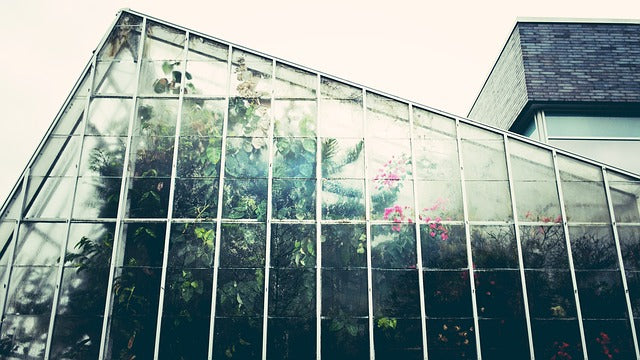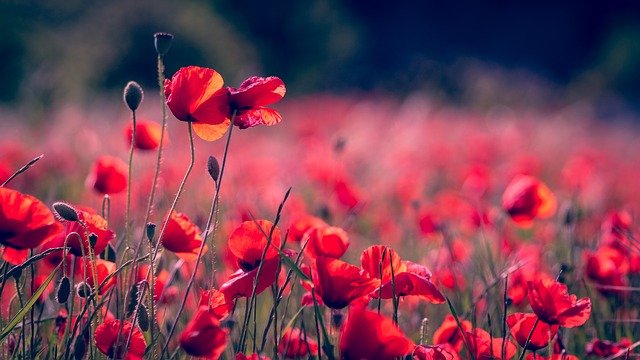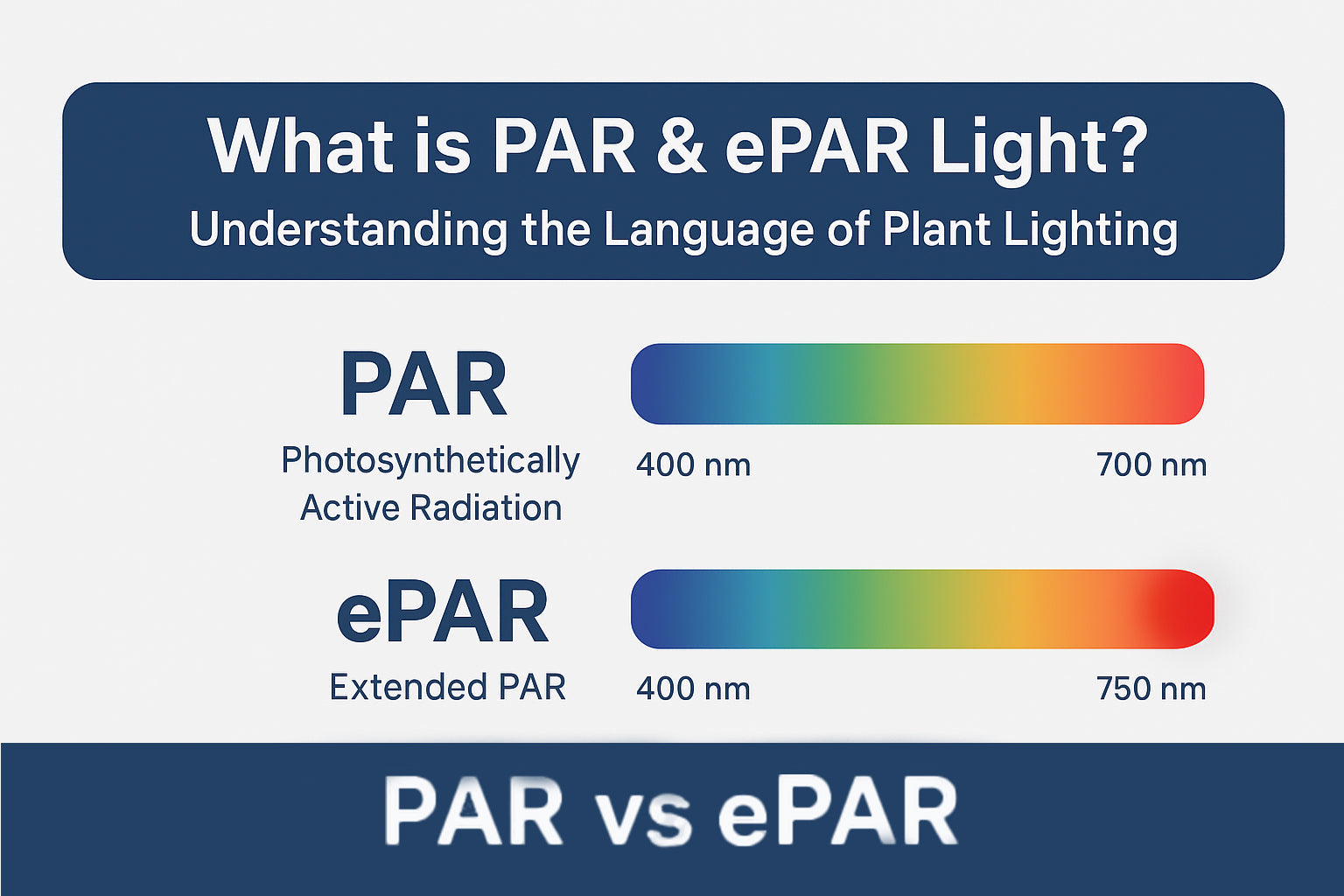
Grow Room VS Grow Tent:Which One Should You Choose
Deciding to have your own grow room can be exciting for beginners.
It allows them to grow crops, vegetables, fruits, etc, in the comfort of their homes, especially with the help of indoor LED grow lights.
However, newbie growers are often left confused with the umpteen choices that they have.
They are often faced with the challenge of choosing the right materials and equipment for their setup.
Plus most beginners don't have many funds to buy high-end items. If that sounds like you, don't worry.
In this article, we'll explain the difference between a grow tent and a grow room, discuss the pros and cons of each set-up and help you decide which one is ideal for your needs.
- Part 1: Grow Room VS Grow Tent: What’s the Difference?
- Part 2: Pros and Cons of Indoor Grow Room
- Part 3: Pros and Cons of Indoor Grow Tent
- Part 4: Factors You Should Take Into Consideration
Grow Room VS Grow Tent: What’s the Difference?
Most beginners tend to get confused between the two terms and don't understand that these words have different meanings. We'll begin by letting you know the grow room meaning.
In simple words, a grow room, as the name suggests, refers to an entire room that has been converted into an indoor growing facility.
On the other side, a grow tent may be a growing unit that is installed in a room.
With the help of a grow room diy, you can set up an indoor growing facility inside your home.
The most suitable places to set up a grow room include the attic, the basement, a spare room, or areas that are no longer in use.
Having a grow room that is separated from the rest of the house ensures that your plants are away and safe from pets, children, or visitors that may harm them.
A grow room can be as big or as small as you want it to be. Expert growers use a grow room design to use the space and the equipment that they have to have maximum yields and in turn, maximize the return on investment.

These designs are suitable for those who grow plants on a large scale and/or for commercial purposes. It is easy to take care of the grow room ventilation and you can get a grow room controller to change the temperature of the facility.
Grow tents typically have a frame that is covered with fabric and has vents to allow ventilation. They come in a variety of sizes and with plenty of features that allow you to have better control over the environment of your plant canopy.
With this statement, it may be clear that grow tents take up a lot less space than an entire grow room. But less space also means less yield.
So, it all comes down to what you have available at hand and the goals that would help you decide whether you should have a grow room or a grow tent.
In the next section, we'll look at the pros and cons of a grow room to help you better understand if this is the right choice for you.
Pros and Cons of Indoor Grow Room
A full-fledged, grow room facility can include full-spectrum grow lights, proper control of temperature, humidity, air circulation, odor and moisture, and much more.
A growroom facility is ideal for individuals who have an entire room that can be dedicated to cultivation. Commercial operations can be easily carried out in such a space.
Pros:
- Higher Yield:
Since a grow room provides you with much more real estate than a grow tent, you can easily grow different crops in the same room or even grow a huge batch of the same crop.

- Controllable Environment:
While growing indoors, you don't have to worry about uncontrollable variables or factors such as rain, drought, or snow.
Additionally, the indoor growing environment is much more controllable–this is particularly handy for those who want to enjoy fruits and vegetables that are not in season.
A grow room humidifier would be able to provide humidity to high-humidity-loving plants. Likewise, airflow and circulation are necessary for plants.
If you're looking for growing room ventilation ideas, make sure that you look for an efficient ventilation system with exhaust fans and oscillating fans.
- Easy Pest/Insect Control And Prevention:
Grow rooms give you more control over pests and insects. In case, a plant is infected, it is easy to control it since it is a smaller space than an entire field. Plus, you can prevent pests/insects by adding pesticides and insecticides.
Cons:
- A Bit Heavy On the Pocket:
A grow room may require extensive supplies, materials, and equipment such as grow lights which may be costly. Beginners may find it hard to invest huge amounts.
- Constant Maintenance and Close Watch:
Indoor set-ups require constant maintenance and require you to notice carefully how plants react to the change in temperatures. Some plants are vulnerable and not able to bear heat while others may be able to tolerate harsh conditions.
- Artificial Environment:
Nothing can beat outdoor farming. Even though modern technology has given us grow lights that can mimic the sun, they cannot replace the sun entirely. Outdoor-grown plants may have lower levels of metals.
These plants receive rain which contains nitrates - a major macronutrient that helps them thrive. On the other hand, indoor-grown plants can have high amounts of metals and they will not be able to receive rainfall.
In the next section, let's take a look at the pros and cons of a grow tent.
Pros and Cons of Indoor Grow Tent
The frame of a small grow tent is portable and easy to construct. If you plan to move the grow tent to another part of the house, you can do that without any problem.
Pros:
- Less Space:
Grow tents allow you to use the extra space in any room to grow plants. If you can't dedicate a whole room to indoor growing, you can certainly find space to set up a grow tent.
Many grow tents come with a ready-made frame that can be installed in no time. You can set up stacking units to utilize the space to the fullest.
- Beginner and Budget-friendly:
Grow tent kits are much more beginner-friendly. While looking for grow tents for sale, you may find that the costs of setting up a grow tent with grow light are much less than setting up a grow room.
You can operate this set-up for a short time to help you determine if you can expand and invest in a large-scale growing facility.
- Energy Saving:
Most grow tents come with reflective walls that bounce back the light and help your plants absorb as much light as possible.
- Durable and Long-lasting:
Several tents come with a zipper in the front. This is helpful if you have kids or pets that can enter and pluck or ingest the plants.
The material of most grow tents is durable, sturdy, and will last for a long time.
Cons:
- Appearance:
Having a grow tent in the corner of the bedroom can affect the overall appearance of your bedroom. Even though it doesn't take up a considerable amount of space, it still looks like a huge tent in your room.
We recommend setting it up in a room that isn't used as much, such as a storage room.
- Limited Space:
You can only grow a set number of plants in a grow tent as opposed to a grow room, which puts you in a disadvantaged position if you want to grow a huge batch of crops in one go.
In the next part, we'll discuss the factors that you should take into consideration. These would help you take your grow room diy to the next level.
Factors You Should Take Into Consideration
- Your Unique Environments
Every growing facility is unique–some growers may be able to provide their plants with a few hours of natural sunlight while others may live in colder temperatures.
Furthermore, different areas inside the same house may have different climates. The attic may not receive as much light as the basement or the basement might not have proper air circulation.
The kind of plants you want to grow and the size available also play an important role in helping you determine which setup you need to have.
- The Impact on Your Home
Needless to say, a grow set-up requires some maintenance and upkeep. It can also impact your home in different ways.
Plants are natural air purifiers and they can improve the air quality of your environment. However, some of them have pungent odors.
Usually, a grow tent or a grow room would mask the smell and keep it locked inside the room. If you live in a shared apartment, you may require the permission of other people in the house to start growing indoors.
Always make sure that you only grow plants that are legally ethically and morally correct to grow. Growing illegal plants without prior permission may end up putting you in trouble.
A grow room would need to be revamped completely. So, your regular, boring space would need a makeover.
You can look for grow room ideas and opt for a grow room design that suits your unique indoor environment. You may be able to find a grow room kit online that comes with soil, pots, UV light for plants, and other necessary materials that would help you get started.
- Size and Function of Your Indoor Garden
Once you have determined the space where you want to have your grow room set up, you can use a measuring tape to measure the size. Try to analyze whether what you're trying to grow would thrive in an indoor garden of this size.

For instance, herbs can grow well in a small-sized grow tent. Vines, on the contrary, may need more height and some support to grow taller.
Additionally, you need to keep in mind that grow lights and other equipment may take up a substantial amount of space. You can set up an indoor growing facility depending on the space requirements of the plants that you want to grow. They can be as small as 4 ft × 4 ft or as big as 10 ft × 10 ft (or even bigger!)
Alternatively, you can stack your plants using stacking units. These would help you to fully utilize the space available.
Another factor worth considering is that flowering plants may have different needs than vegetative plants. Most indoor grow tents are perfect for leafy greens and herbs but growers may face difficulty in providing a suitable environment for flowering plants.

This is because plants in their flowering stages may need a more controlled environment. Orchids, for example, need a drastic shift in nighttime temperatures to trigger flowering.
- Types and Amounts of Materials needed
Materials and equipment are some of the most crucial aspects of a growing setup. To begin, you need to invest in good-quality seeds, soil, and fertilizers.
Why good quality, you ask?
Well, usually, low-quality seeds come mixed with dust particles and sand.
You may be anticipating a massive yield but end up being disappointed. This is why you need to make sure that the plant nursery or store where you buy your seeds and other equipment offers satisfactory supplies.
Next, depending on whether you plan to have a grow tent or a grow room, you may need to buy soil, pots, grow lights, fertilizers, etc.

A small-scale set-up or a grow tent may require only one grow light. We recommend taking a look at Medic Grow Fold-800W LED Grow Light for a 5 ft × 5 ft canopy.
For a large-scale or commercial operation, you may chain up to a hundred fixtures together. These set-ups may require more materials and equipment as compared to small-scale set-ups.
- Your Budget
Budget plays a huge role in a grow room set-up. It would help you understand how much money you can set aside for equipment and materials.
A major chunk of your budget would go towards purchasing the grow lights or a cheap grow tent (if you choose to have one).
Other costs may include the cost of buying pots, soil, seeds, fertilizers, and pesticides/insecticides.

You may also need to make note of the cost of electricity that may be incurred to run the grow lights since they'll need to be kept switched on for a significant amount of time.
Conclusion
To summarise, a grow tent and a grow room come with their own set of benefits.
A grow room is more suitable for a large-scale operation, typically for commercial purposes. This kind of set-up requires more space, more money to invest, and some expertise in the field, to make a profit. It may also be suitable for those who want to pursue organic farming and grow their vegetables at home.
Your decision to choose this technique must be made while keeping the cost and environmental conditions in mind.
A grow tent, on the other hand, is suitable for small-scale set-ups.
It takes a lot less space, less investment, and little to no expertise. It's ideal for those who want to grow flowers, vegetables, or fruits in a compact space in their room.
A grow tent isn't completely discrete and may look awkward in your main bedroom, so keep the aesthetic appeal and impact on your home in mind while making a decision.
Related Posts:
Do Indoor Plants Need UV Light?
Is Light Necessary for Seed Germination?
Featured Products
Blog Posts
Contact Us with Any Idea!
- Choosing a selection results in a full page refresh.
!
































